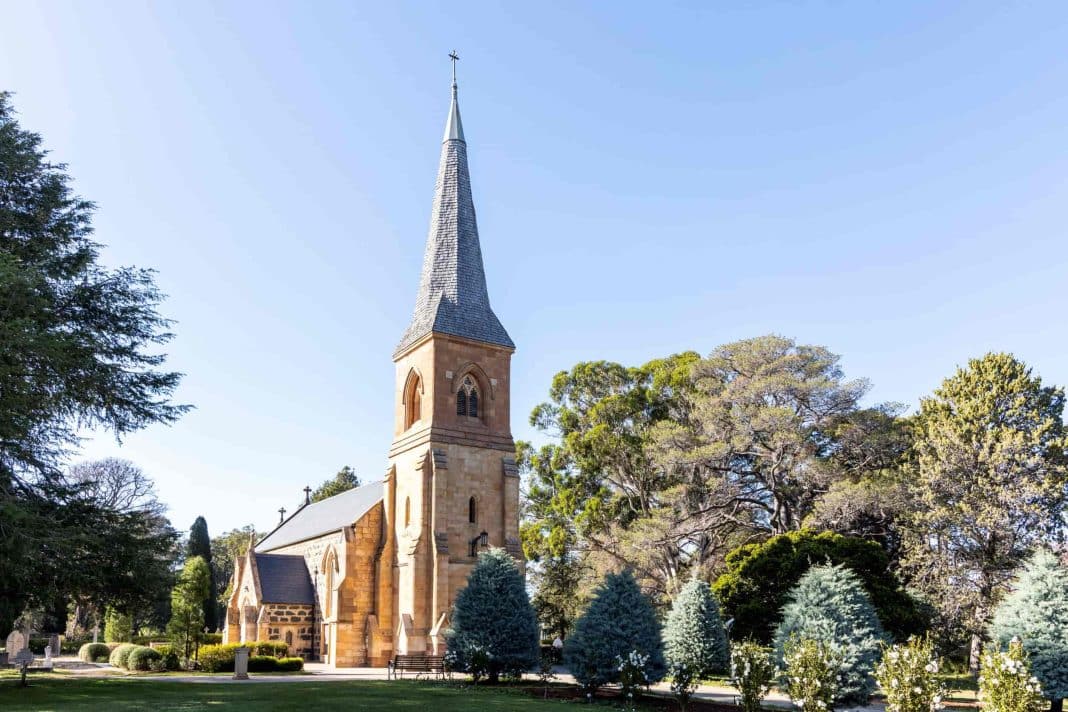Canberra’s oldest church, 19th-century homesteads, signposts from the 1920s, and bush schools of the capital are among Canberra’s historic sites and assets to receive ACT Heritage Grants this year.
Twenty community projects have received the grants, an annual funding program administered by the ACT Government to conserve and promote the heritage of the ACT.
Rebecca Vassarotti, Minister for Heritage, said the grants preserve and celebrate the unique stories of the ACT’s rich history. This year focuses on the heritage of the ACT’s diverse communities and digital heritage experiences.
“These grant recipients will help to ensure the Canberra community can continue to enjoy stories of our past, into the future,” Ms Vassarotti said.
More than $350,000 in funding was awarded to projects that include interpretive signage, cross-cultural education and training, publications, and restoration and conservation projects. It also includes $166,990 for the Heritage Festival and the Heritage Emergency Fund, which are Community Heritage Partnership Projects.
The Ginninderra Catchment Group received $25,250 for Community Learning on Ngunnawal Country. The three ACT Catchment Groups (Ginninderra, Southern ACT, and Molonglo Conservation Group) will partner with Buru Ngunawal Aboriginal Corporation to deliver a series of site-based cross-cultural education and training events and interpretive walks.
The Reid Residents’ Association received nearly $16,000 to conserve six concrete pillar signposts in Canberra’s inner north. Seven posts were fully restored through a 2020 heritage grant.
The Heraldry and Genealogy Society of Canberra received $15,250 to digitise the Father Brian Maher Collection, detailing the lives of more than 400 Catholic families and their descendants. Many of the families are linked to early European settlers in the ACT and surrounding districts, and include immigrants, convicts, and free settlers. Father Maher was a parish priest in the Canberra and Southern Tablelands region for 50 years; he restored churches in Braddon, Gundaroo, and Bungendore, and wrote 10 parish histories.
The Society also received $8,150 for augmented reality content on signs on the Canberra Heritage Track.
The owners of a private heritage dwelling in the Wakefield Gardens Housing Precinct received more than $12,750 to replace unsympathetic aluminium framed windows with original timber windows, consistent with Heritage Act 2004 requirements.
The National Foundation for Australian Women received $12,000 for digital biographies of significant ‘missing’ women on the Honour Roll, which will be added to the 480 existing ACT entries on the Australian Women’s Register (AWR).
The National Rock Garden Trust received more than $10,500 for an Indigenous welcoming feature, in collaboration with Ngunnawal elders.
Professor Roger Benjamin, professor of art history at the University of Sydney, received $10,000 for his book project, Growing Up Modern, which Halstead Press will publish this year. The subject of the book is the ACT heritage-registered Benjamin House (or Round House), in Deakin, one of Canberra’s best-known modernist houses. Designed by Alex Jelinek, it is also the story of a Czech immigrant who fled post-WWII Europe, worked in the Snowy Hydro Scheme, and realised his dream as an architect.
The Hall School Museum and Heritage Centre received more than $7,000 to carry out a critical review of its large and expanding collection of materials relating to bush schools of the Capital Region, as well as $10,000 for a disability access path.
St. John’s Anglican Church Reid received $10,000 to conserve damaged 1870s sandstone near the front of the church.
“The stone is quite old and deteriorating in parts,” the rector, the Rev. Dave McLennan, explained. “Based on technical advice, ACT Heritage have asked us to do some compatibility testing with the surrounding stones before we replace any. This is to ensure any new replacement stones are of a similar quality to the adjacent ones to prevent any salt or other possible issues shifting into the adjacent stones after a new one has been installed.”
The church will match the heritage grant from their own funds.
Built in 1841, the church is the oldest surviving public building in Canberra’s inner city and the oldest church in the ACT.
She Shapes History received nearly $10,000 for “Spies of Canberra”, an educational two-hour espionage themed walking tour of Canberra’s inner south, sharing the stories of the Australian women who were spy catchers and spies, challenging the male-dominated history of Australian espionage.
The Tidbinbilla Pioneers’ Association received more than $9,000 for conservation works at Rock Valley Homestead, home to the pioneer Green family from the 1890s to the 1960s.
The Canberra and District Historical Society received nearly $7,000 to digitise its photo collection.
All Saints Anglican Church Ainslie received more than $4,400 for a new electrical switchboard. Built in the 19th century, the church was the First Mortuary station in Rookwood, Sydney. It was transported to Canberra in the 1950s.
The Hackett Community Association, the Woden Valley Community Association, and the Friends of the Albert Hall all received funding for Canberra Tracks signs.
The Hackett sign will tell the historical significance of the avenue of trees planted in the 1930s to form a screen between a proposed cemetery and the future suburb of Hackett, and which today form the backdrop for the oval and the original Hackett Primary School.
The Woden sign will outline the history of Curtin’s Radburn town-planning precinct. A map will indicate the full extent of the Radburn and help orientate the visitor, to walk or cycle through the parklands and cul-de-sacs.
The Albert Hall sign promotes the history and heritage significance of the building.
The Canberra Croquet Club, the oldest sporting club in the ACT, received $3,500 for conservation works.
David Hoffman received $3,000 to write A History of Bridge in the ACT and surrounding regions. From the 1920s, bridge clubs helped to provide friendship and a sense of community in early Canberra.
“It is vital that we conserve and protect our heritage for future generations to enjoy,” Ms Vassarotti said. “I am delighted that a number of these projects will highlight Aboriginal cultural heritage, provide better access to resources and records, and conserve objects and places.”



